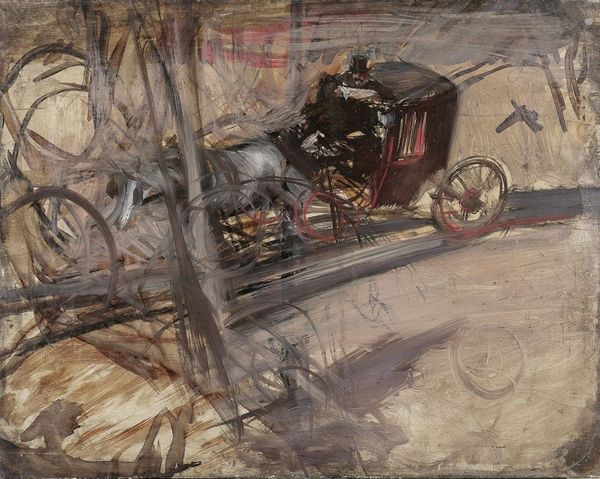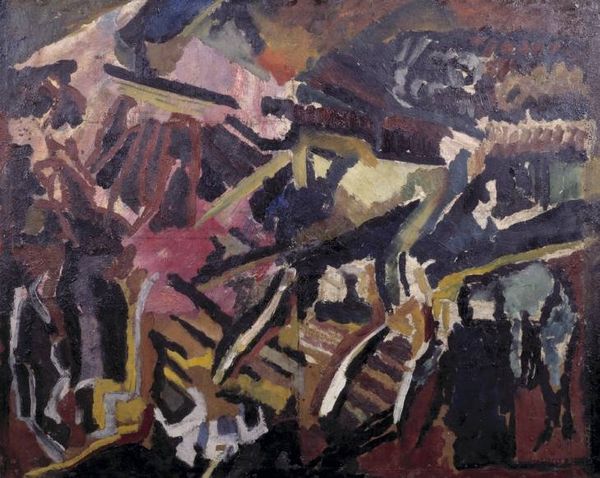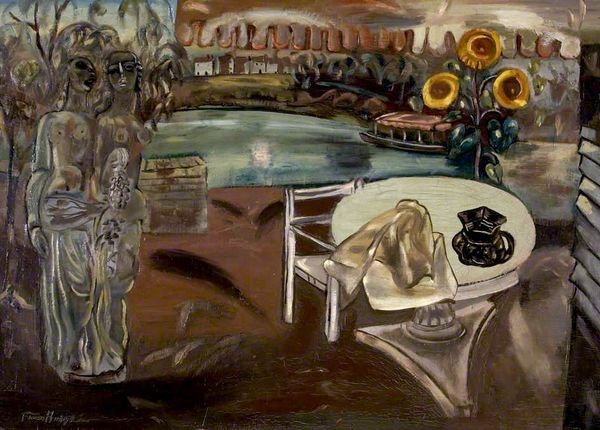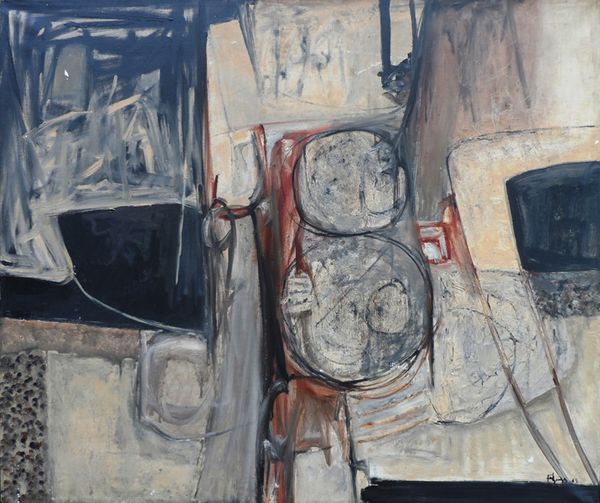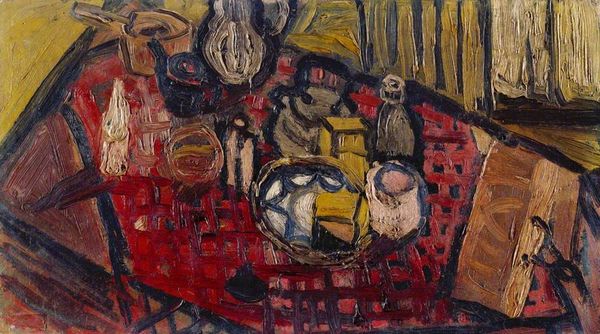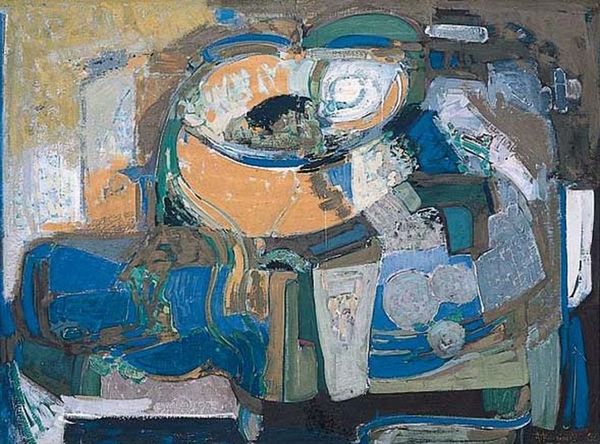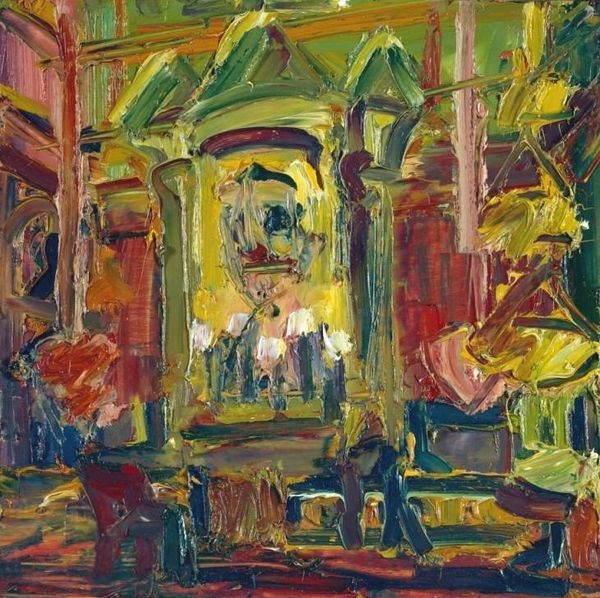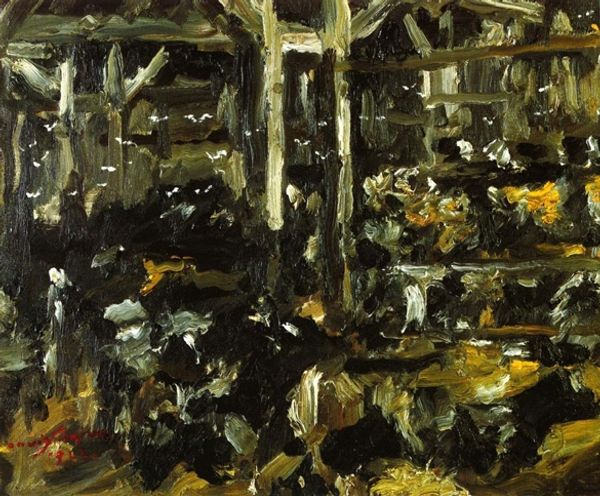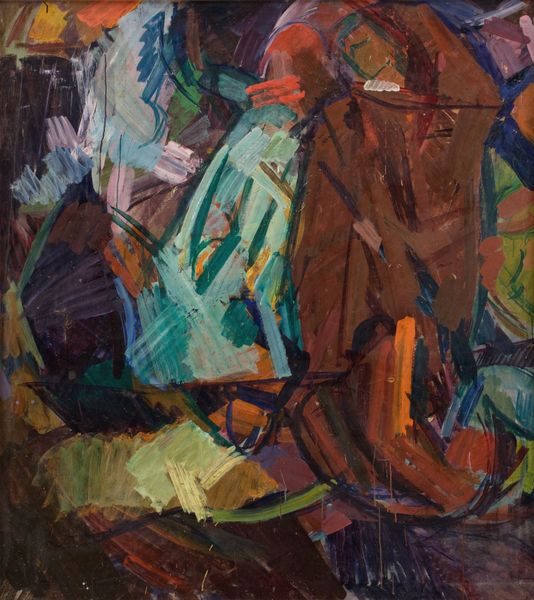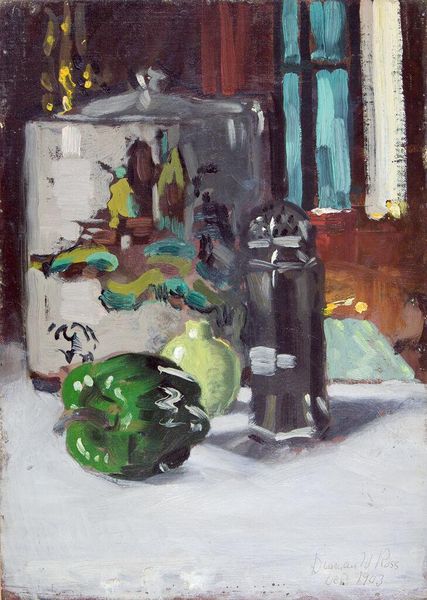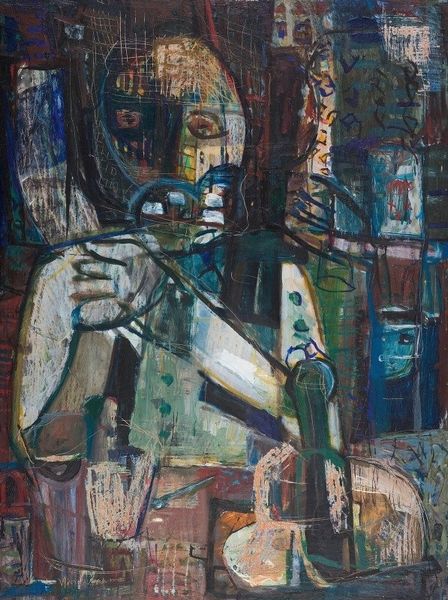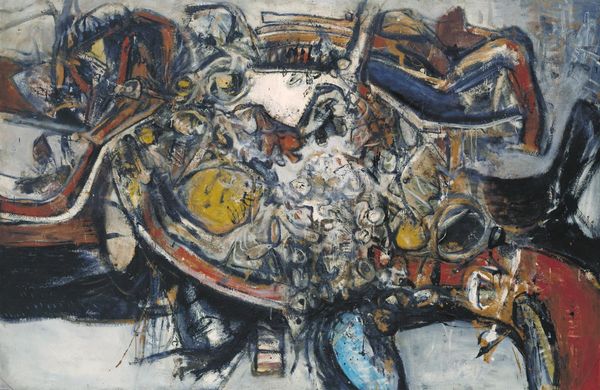
painting, oil-paint
#
painting
#
oil-paint
#
figuration
#
oil painting
#
realism
Copyright: John Bratby,Fair Use
Curator: This is "The Bicycle Interior," an oil painting by John Bratby, completed in 1958. It's quite a piece, wouldn’t you agree? Editor: Crowded comes to mind. A claustrophobic still life with this haphazard collection of objects, rendered in almost aggressively thick paint. It’s hardly idealized domesticity. Curator: Bratby was associated with Kitchen Sink Realism, a post-war British art movement depicting ordinary, often gritty, aspects of working-class life. The bicycle itself, more than a mere object, served as an emblem of everyday experience. Editor: True. A bicycle often implies freedom, open spaces, movement, escape. Here, though, it's just another piece of cluttered interior. It seems symbolic, maybe about limited mobility. I find myself asking questions about societal restrictions, cultural anxieties. Curator: Certainly, the era was ripe with a sense of austerity and social change. Consider the newspaper depicted – a direct engagement with contemporary events, framing how people understood their world, mediated as it was. Editor: Right. The news as an inescapable layer within their environment, literally on the table amongst domestic routines. The heavy impasto itself seems to contribute, almost pressing the weight of existence upon the canvas. Curator: There’s a raw honesty in its representation that's quite powerful. This isn't about polished surfaces or flattering portrayals. It’s reflecting on postwar realities and using ordinary items. Editor: Precisely. These mundane items attain an iconic, slightly disquieting aura. The psychology of clutter… I wonder if it reflects on some level the internal mental state of the artist as much as a picture of everyday life. Curator: Possibly, artists work on reflecting not only their lives, but as spokespersons of the popular culture of the time, thus, imbuing each work with more meaning that a still shot on film. Editor: This painting provides plenty of questions. Food for thought indeed. Curator: A fascinating insight, showcasing the rich complexities embedded within seemingly simple compositions.
Comments
No comments
Be the first to comment and join the conversation on the ultimate creative platform.
